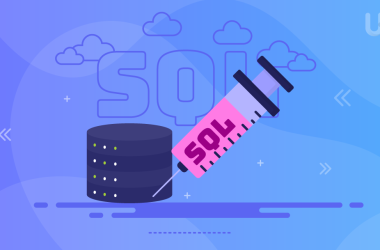In today’s rapid-paced digital era, your website is more than a location on the Internet—it’s your face for brand recognition, your store open 24/7, and the ticket to getting noticed in a crowded online environment. Launching it is however only half the work. For it to run without hiccups and attacks by cybercriminals and stay new to people visiting it, you need one thing: website maintenance.
Think in terms of taking care of a car. Would you deprive it of oil changes and expect it to never break down? The same is true for ensuring a healthy website. A well-kept site increases user experience, aligns with your marketing strategy, safeguards against cyber attacks, and propels your business forward. Break it down into a step-by-step guide.
Secure WP Hosting for Best Website Maintenance!
Need a dependable hosting solution to make website maintenance easier? UltaHost provides powerful, secure WordPress hosting options for smooth, ongoing maintenance and top-notch performance.
What Is Website Maintenance?
Website maintenance is the regular check-up, cleanup, and tune-up of your website to make sure it works well and stays secure. This includes fixing bugs, updating plugins, checking for broken links, keeping your content current, and more.
It might sound technical, but website maintenance is simply about making sure your site does what it’s supposed to do without falling apart, especially in a world full of malware, DDoS attacks, and cybercrime.
Type of Website Maintenance
Depending on your setup, website maintenance tasks can vary. Here are the main types:
- Technical Maintenance: This covers updates to your site’s software, plug-ins, backend systems, and security tools.
- Content Maintenance: Updating blog posts, images, promotions, and product pages keeps your site fresh and helps with search engine optimization.
- Performance Maintenance: Boosting speed, fixing loading issues, and ensuring mobile-friendliness improves the user experience and reduces your bounce rate.
- Security Maintenance: Running security scans, checking for vulnerabilities, and keeping an eye on cybersecurity risks helps you avoid nasty surprises like data loss or phishing attacks.
The Benefits of Website Maintenance
Here are some key advantages of website maintenance:
Earn Audience Trust
When your website works properly—no broken pages or slow loads—it tells your visitors you’re professional. In today’s Information Age, trust is everything. A secure, up-to-date site shows you care about your visitors’ privacy, building both your reputation and brand credibility.
Get Business Exposure
Google and other search engines love well-maintained sites. Clean code, updated metadata, working links, and fresh content help your site appear in organic search results. This means more web organic traffic, more eyes on your products, and better promotion and marketing communications.
Improve Your Website’s Effectiveness
Whether it’s getting more email signups or product purchases, a well-tuned website helps you meet your goals. Maintenance boosts usability, keeps your content management system running smoothly, and ensures a strong customer experience from start to finish.
How To Do Website Maintenance?
Let’s walk through a simple checklist of what you should be doing regularly:
Perform Backups and Disaster Recovery
Always have a backup and disaster recovery of your site’s files and data in case something goes wrong. From accidental deletions to cyberwarfare or even server crashes, a solid backup plan can save your online business. You should also store your backups in a safe location, such as cloud storage VPS, or an external hard drive.
Conduct Performance Optimization
Run tools such as Google PageSpeed Tools to test page load speed. Speed is important for both user experience and search engine results pages (SERPs). Organize large images, minimize CSS or JavaScript errors, and possibly use a content delivery network (CDN).
Update Website Content Often
Fresh content signals to both users and search engines that your site is alive and active. Keep blog posts updated, remove outdated info, and fix typographical errors or broken hypertext links.
Run Security Scans
Use tools or plugins to scan your site for malware, software bugs, or security holes. Look for authentication risks, data breaches, or outdated patches that need applying.
Audit Links for Issues
Broken links hurt your SEO and annoy users. Regularly audit internal and external links to make sure they work, especially if you rely on backlinks for digital marketing.
Test Website’s Browser Compatibility
Make sure your site looks and works the same across all browsers—Chrome, Firefox, Safari, Edge, etc. This is a key part of web development and boosts accessibility for everyone.
Review Key Performance Metrics
Track key figures such as bounce rate, average time on site, and conversion rate using Google Analytics. These performance measures allow you to recognize what is performing well and what is not.
Renew Your Domain Name and Web Hosting Plan
Don’t let your domain name or web hosting service expire! Set reminders for renewal. Losing your domain could cost you big time, both in terms of money and your online presence.
When Should You Do Website Maintenance?
Break your checklist into manageable tasks using this simple schedule:
Weekly Maintenance Tasks
- Review website traffic and bounce rates
- Approve comments or feedback
- Back up your site
- Check for obvious bugs or loading problems
Monthly Maintenance Tasks
- Update plugins and themes (especially if using WordPress)
- Test site speed and browser compatibility
- Refresh the homepage or blog content
Quarterly Maintenance Tasks
- Deep scan for malware and cyber threats
- Review and clean your database
- Test site on multiple devices
- Review top-performing and underperforming content
Annual Maintenance Tasks
- Renew licenses, domains, and subscriptions
- Test overall usability and user experience design
- Evaluate your marketing goals and site performance
- Refresh old content or remove outdated pages
How Much Does Website Maintenance Cost?
Website maintenance costs can vary based on your site’s size, platform, and needs. Here’s a general idea:
- DIY maintenance: Mostly free, aside from your time.
- Freelancers or small agencies: $50 to $200/month, depending on services.
- Full-service plans: $300+/month, usually includes backups, security, content updates, and tech support.
Think of it like this—investing in wordpress maintenance plans helps you avoid costly disasters like downtime, data loss, or a full website rebuild. Plus, it keeps your online services running smoothly for your customers.
Conclusion
Website maintenance might not sound exciting, but it’s one of the most important things you can do to protect your online business. In a world of ever-evolving digital technology and constant cyberspace threats, keeping your site in shape is a must. By following this simple checklist and staying consistent, you’ll build trust, improve your visibility on search engines, and avoid tech headaches down the road.
It’s not just about keeping your site alive—it’s about helping it grow.
For a stress-free WordPress experience, try Ultahost’s Managed WordPress Hosting. We will handle the nitty-gritty of updates, backups, and security so you can attend to your business and content. Start today and have worry-free WordPress hosting
FAQ
Why is website maintenance important for SEO?
It helps your site rank better on search engine results pages by keeping things like speed, content, and backlinks in good shape.
How often should I update my website?
Aim for weekly check-ins and monthly updates. Bigger overhauls can happen quarterly or yearly.
What if I don’t maintain my site?
Expect slower performance, broken features, increased security risks, and a drop in web traffic.
Is WordPress hard to maintain?
Not at all. With the right plugins and regular check-ins, WordPress can be pretty beginner-friendly.
Can outdated plugins cause problems?
Yes, they can lead to bugs, security vulnerabilities, or even site crashes. Always keep your software updated.
Do I need a professional to maintain my website?
Not necessarily. If you’re tech-savvy, you can manage it. But for busy businesses, hiring help can save time and reduce risk.
Does maintenance affect my site’s user experience?
Absolutely! A well-maintained site runs faster, looks better, and makes it easier for users to find what they need.








